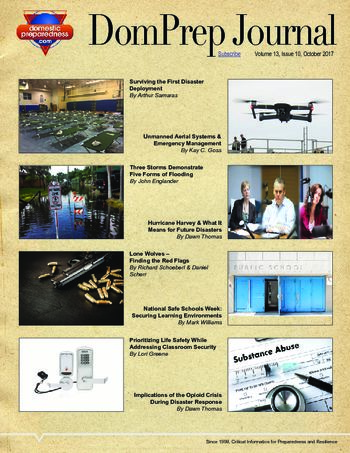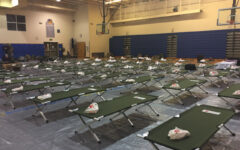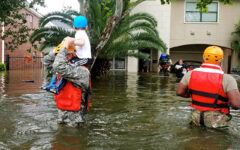

Prioritizing Life Safety While Addressing Classroom Security
Lori Greene
October 25, 2017
As school districts across the country provide an effective level of security within budgetary constraints, dozens of new retrofit security devices are being marketed to enhance the safety and security of students and teachers. Although the price tag for some of these security methods may be attractive, there are also significant life-safety implications to consider.

Education – The Ultimate Personal Protective Equipment
Catherine L. Feinman
October 25, 2017
A firefighter would not run into a burning building without turnout gear and self-contained breathing apparatus. A paramedic would not treat and transport a patient without proper body substance isolation precautions. A hazardous materials technician would not attempt to contain a highly toxic chemical spill without donning a Level A protective suit. Personal protective equipment (PPE) is standard issue for these professions. Responding to a disaster without sufficient education on the type of incident, the warning signs, the tools available, and even themselves would be like running into one of the above scenarios without the proper level of PPE.

Implications of the Opioid Crisis During Disaster Response
Dawn Thomas
October 24, 2017
During disaster response, individuals suffering from opioid addiction have both similar and unique needs as compared to those suffering from other types of illness. Emergency responders need the resources to manage opioid-addicted victims of a disaster, and response teams must be appropriately staffed to meet the physical and behavioral health needs of addiction. Response personnel must coordinate closely with local public health officials and other addiction stakeholders to facilitate access to local support services

Surviving the First Disaster Deployment
Arthur (Art) Samaras
October 23, 2017
When runners compete in their first marathon or triathlon, they often set goals such as, “I hope to break four hours,” or “I want to beat my brother’s time.” However, a different mindset should be taken for a first attempt at an endurance event. Rather than placing benchmarks or targets, the goal should be to simply finish the first event. This same advice applies to a first-time disaster deployment.

Lone Wolves – Finding the Red Flags
Richard Schoeberl and Dan Scherr
October 18, 2017
The Department of Homeland Security has acknowledged that the threat of “lone wolf” attacks continues to represent the greatest threat to national security. This acknowledgment is supported by the fact

Hurricane Harvey & What It Means for Future Disasters
Dawn Thomas
October 18, 2017
As initial search and rescue operations in Houston, Texas, following Hurricane Harvey shifted to
recovery efforts, three CNA experts discussed the various challenges metropolitan areas face during,
immediately after, and throughout the long-term recovery from a large-scale disaster. Drawing on their
40 years of collective experience, panel moderator Monica Giovachino, Jason McNamara, and Dawn Thomas
shared perspectives on a wide range of disaster response and recovery topics.

Three Storms Demonstrate Five Forms of Flooding
John Englander
October 11, 2017
Flooding results from three primary forces: rainfall, coastal storm surge, and rising sea level, made even worse with by runoff and extreme tides. Recently, hurricanes Harvey, Irma, and Maria showcased the new environmental conditions the world faces as well as the devastating damage that can occur when any combination of these flood types converges on a built community constructed without adequately addressing the increasing threats.

Unmanned Aerial Systems & Emergency Management
Kay C. Goss
October 11, 2017
Long before the invention of drones, emergency managers determined the overall scope of a crisis using information from emergency personnel on the ground, and from the chain of command created through the Incident Command System. Today, drones have many capabilities that could enhance response activities and change the way disasters are managed. Hurricane Harvey demonstrated how this technology is rapidly changing.

National Safe Schools Week: Securing Learning Environments
Mark Williams
October 4, 2017
Studies show that children’s learning improves when they feel both physically and emotionally safe. As “National Safe Schools Week” (16-20 October 2017) approaches, it is an appropriate time to discuss how to create these environments through safe schools programs in local communities across the United States.

